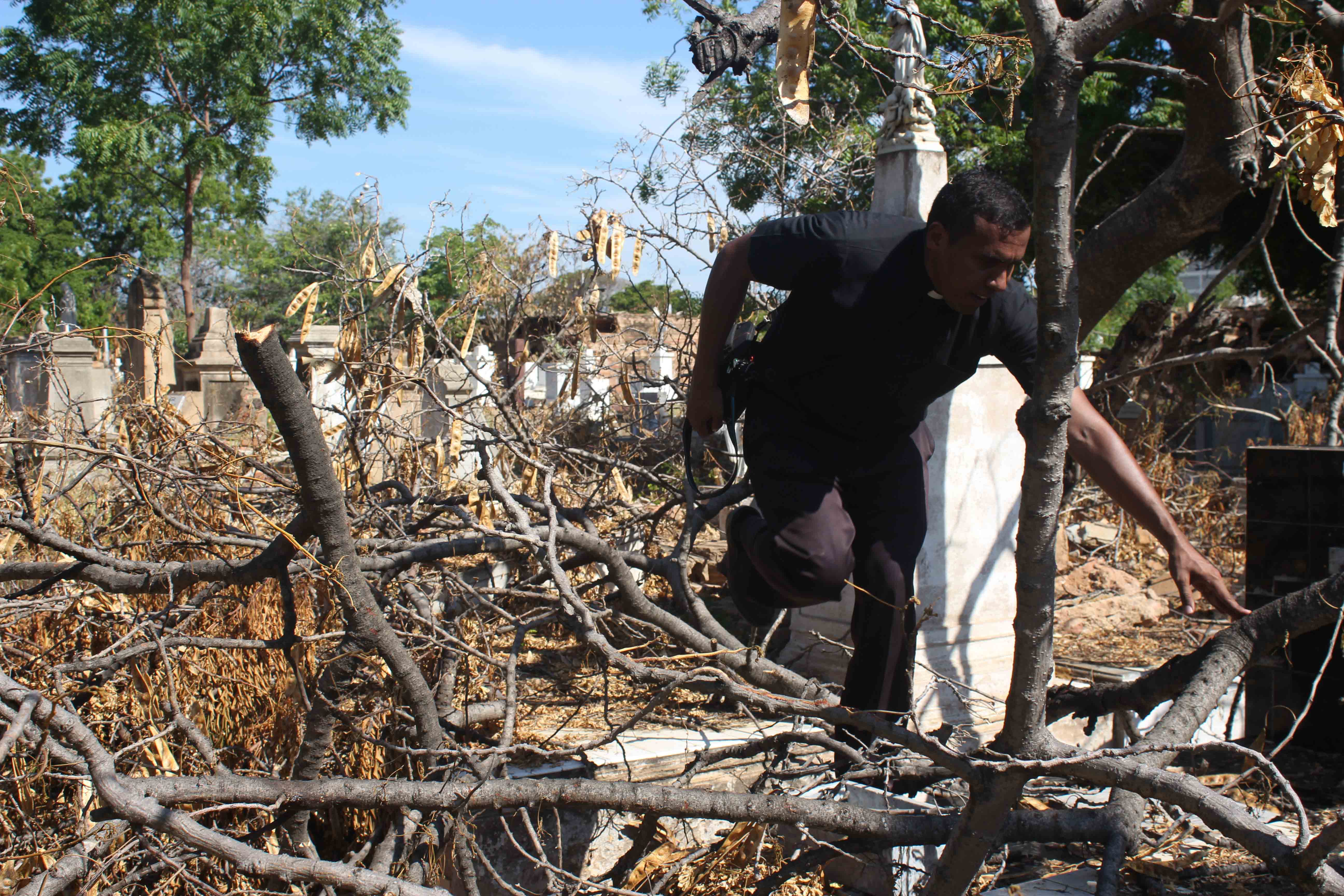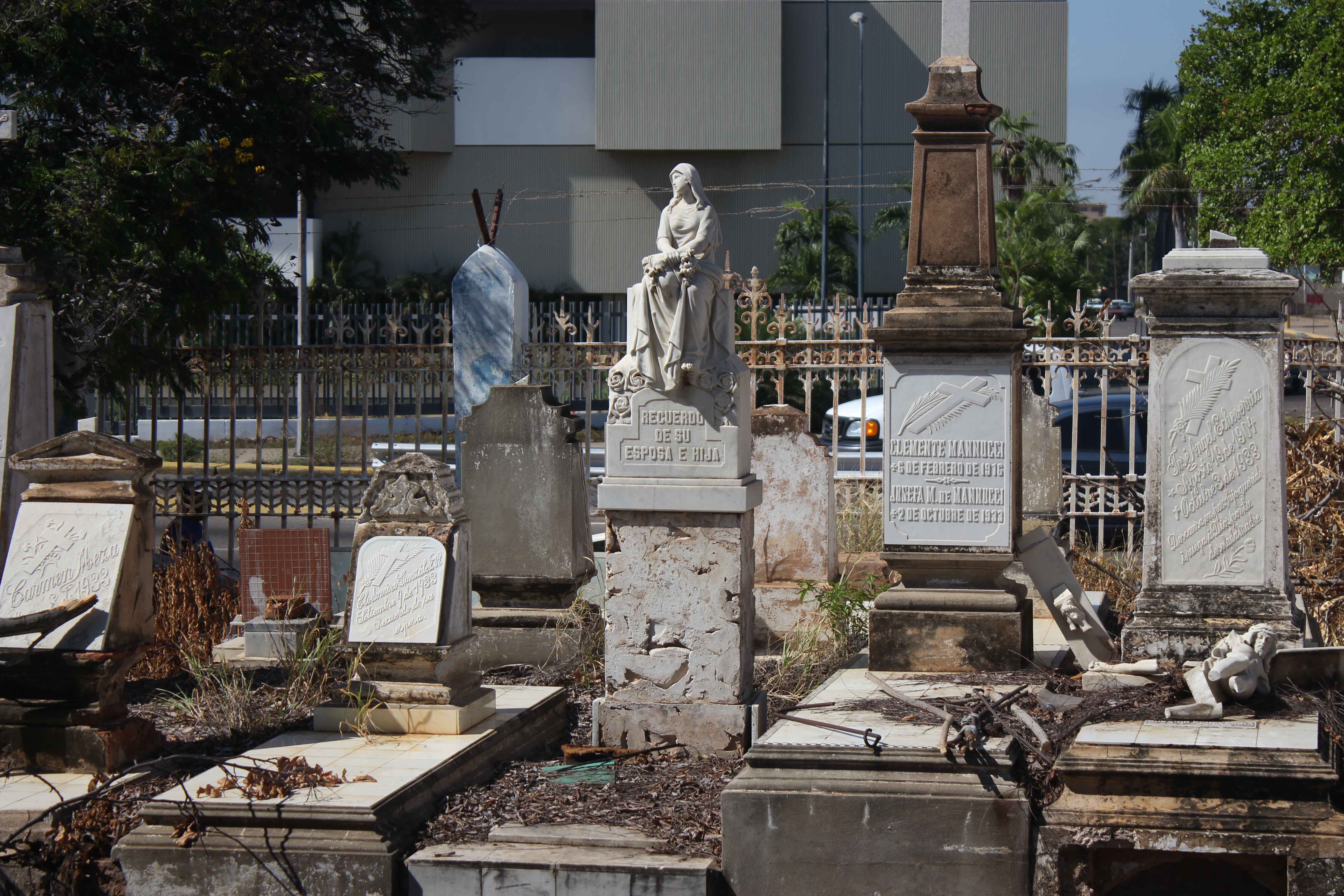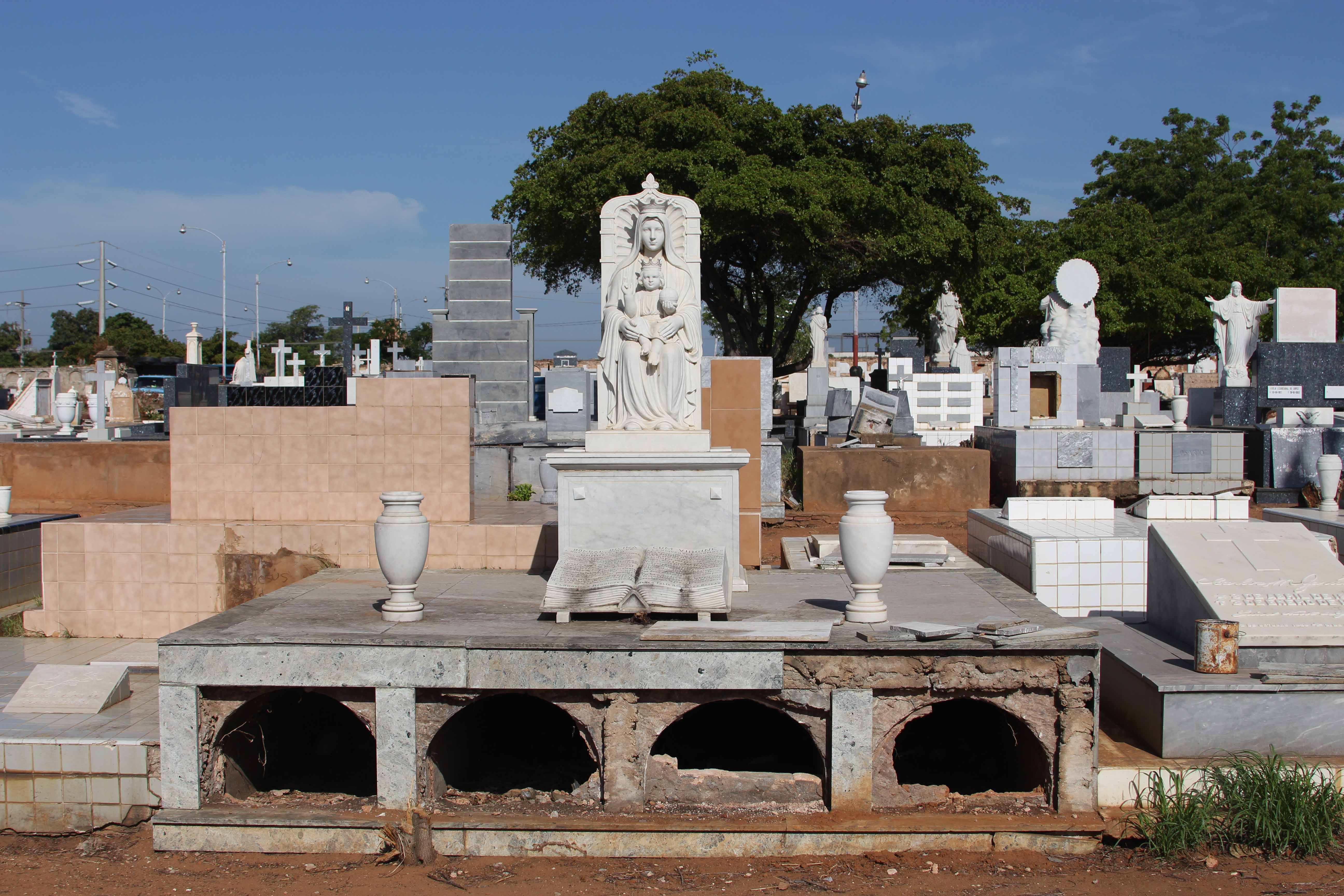Graverobbers Plunder Maracaibo’s Old Cemeteries
Cemetery El Cuadrado can no longer offer a final resting space. Graverobbers, lack of maintenance and government negligence are threatening what little is left of historic memories, art and peace for the deceased.


Photo: Mario Pérez
Dying in Maracaibo is now a double tragedy, since the city’s cemeteries can’t even guarantee the security of the bodies buried inside them.
 Cemetery “El Cuadrado”. Photo: Mario Pérez
Cemetery “El Cuadrado”. Photo: Mario Pérez
The City of the Sun has three old cemeteries. The “Corazón de Jesús,” founded in 1941; the “San José,” best known as “El Redondo,” founded in 1924; and “El Cuadrado,” which exists since 1981 but was founded in 1879, where most illustrious Zulians of the late 19th and early 20th centuries are buried.
Since July, “El Cuadrado” cemetery started drawing Zulians’ attention because of its lack of maintenance and the undergrowth that took over the open-air museum, turning it into a horror film location. The German foundation Fuxburg Carolath, along with Zulia’s Governor’s Office and through the Rafael Urdaneta Center (CRU), offered to provide the maintenance service and the work to remove the undergrowth. Once they did it, they revealed something that was hidden for a long time: the evidence of the profanation of almost every tomb in the cemetery.
 Cemetery “El Cuadrado”. Photo: Mario Pérez
Cemetery “El Cuadrado”. Photo: Mario Pérez
They found remains of jawbones scattered across the cemetery, most of them with missing teeth. Employees of the cemetery explained that graverobbers are looking for gold teeth or any other valuable accessory.
“El Cuadrado” now shows tombstones split in half, showing the destruction of the architectural heritage of great marble sculptures carved by Italian and Venezuelan artists. Any bronze or copper incrustation has also been stolen and taken to some junk yard or sold to the highest bidder.
Cemetery “El Cuadrado”. Photos: Mario Pérez
Graverobbers open the crypts and pull the coffins out in search of valuable items such as gold rosaries, rings, bracelets, necklaces, earrings, or any other belonging of the deceased, who were sometimes buried with valuable objects.
People are well aware of the cases of marble busts that have been stolen from the tombs of famous citizens, such as Udón Pérez, composer of Zulia State’s anthem; Jesús Enrique Lossada, rector who presided over Zulia University’s reopening, among others.
 Cemetery “El Cuadrado”. Photo: Mario Pérez
Cemetery “El Cuadrado”. Photo: Mario Pérez
According to sociologist and anthropologist Daniel Castro, the state of El Cuadrado cemetery in Maracaibo is evidence of how the memory of a society can be erased. Castro says: “Cemeteries leave an irreplaceable trace for the reconstruction of a city’s identity (…) the paradox is critical for the Venezuelan case, especially in Zulia, because we still keep a direct relationship with our colonial and republican past. These ties are affected by the ideologies introduced and the new forms of government ruling the country for the past 20 years.”
For the Zulian sociologist—whose mother, former Zulia governor Lolita Aniyar, is buried in “El Cuadrado—“cemeteries are like a message in a bottle that a shipwrecked sailor tosses to the sea in the hope that future generations might find it and reconstruct history. In the end, this helps us rejoin the historical cycle that we’ve lost.”
 Cemetery “El Cuadrado”. Photo: Mario Pérez
Cemetery “El Cuadrado”. Photo: Mario Pérez
Silverio Osorio, a Catholic priest, vice-pastor of the Metropolitan Cathedral of Maracaibo, pastor of the church of the San Francisco de Asís convent right in the heart of the city’s historical center and activist for the preservation of downtown Maracaibo historical heritage, is concerned by how people currently choose to cremate and bury their relatives. He says that’s why “nobody visits or cares for old cemeteries in Maracaibo.”
On the day she had to face her husband’s death, Lourdes Párraga decided to cremate him to avoid exposing him to the profanation of his tomb. Párraga says that “when my neighbor’s mother died, she was buried in the Corazón de Jesús cemetery. My neighbor went to visit her tomb the day after the burial, and found the macabre scene of her mom’s naked body out of the grave. Someone had stolen her coffin. She had no other choice than to buy another coffin and keep the horrible memory. Nobody in the cemetery took responsibility for the incident.”
 Cemetery “El Cuadrado”. Photo: Mario Pérez
Cemetery “El Cuadrado”. Photo: Mario Pérez
It’s not enough to remove the undergrowth and flooding social media with false promises that the “El Cuadrado” cemetery will become an “open-air museum.”
How will Zulians preserve their memory? Will the government continue to destroy everything, even our final resting space?
Caracas Chronicles is 100% reader-supported.
We’ve been able to hang on for 22 years in one of the craziest media landscapes in the world. We’ve seen different media outlets in Venezuela (and abroad) closing shop, something we’re looking to avoid at all costs. Your collaboration goes a long way in helping us weather the storm.
Donate




